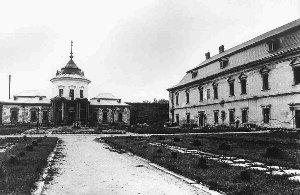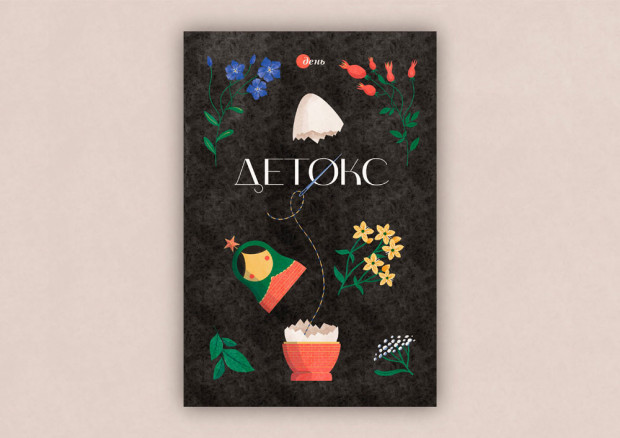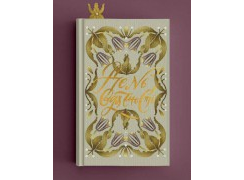THE MYSTERIES OF ZOLOCHIV CASTLE One Ukraine’s least studied historical monuments near Lviv

We knocked on the massive door of Zolochiv Castle. Uncle Yasha, the watchman who opened the door, hesitated for a long time to let us in. After all, the castle has to cherish its old tradition, though we were neither Turks nor Tatars who stormed many times its walls in olden times. Thanks to the hospitality of Nadiya Hupalo, custodian of the castle, we later penetrated the mysteries of one of the most beautiful and most tragic spots in Lviv oblast.
The date, 1634, engraved on a stone speaks of the time when Zolochiv Castle was built. However, its first owner, Jakub Sobieski, a Polish nobleman and the father of the future King of Poland Jan III, probably, did not begin but only completed the construction of the castle, turning it into an impregnable fortress. Tragic was the lot of Zolochiv Castle, that stood as an insurmountable obstacle in the way of Tatar and Turkish armies, thwarting their movement toward Lviv. Castle defenders fought heroically, repelling countless attacks by the Tatars and Turks who sometimes besieged the castle for six or seven days. In 1672 after a fierce battle that lasted six days, the Turks captured and destroyed the castle. By a curious irony, the castle was restored three years later by the captured warriors. It was so strong that all attempts of the Tatar army led by Adji-Girei to seize it in 1675 failed. History remembers the name of the Crown Hetman Stefan Jablonowski, who distinguished himself with exceptional courage, sending death to the enemies from the castle’s towers and bastions. Some time later, Jan III Sobieski turned the castle into his summer residence. The castle was in the possession of the royal family only for a short time. Prince Jakub sold it to the Radziwills, one of Poland’s richest and most powerful magnate families. The Radziwills were rare guests to the castle, caring little about it and, finally, in 1702 they sold the crumbling structure to the Komarnicki family. However, not for long did the new masters of the castle enjoy the austere beauty of its towers, ramparts, and curtains or the unique architecture of the Chinese and the Grand Residence palaces. (Incidentally, the former is considered a rare sample of oriental architecture on the territory of Ukraine.) By 1740, the Austrian authorities bought the castle. That year opened a string of the most tragic pages in its history.
The civilized Austrians must have thought long and hard to hit upon the idea of setting up a prison in a royal palace. Since then things went from bad to worse. Throughout the decades of the Austro-Hungarian and Polish rule of that part of Ukraine, many a prisoner cursed their ill fate in its dark cold dungeons. But could they think that the fate of those who would take their places two centuries later would be even more sinister: the NKVD took a liking to it. As the Nazis occupied Lviv, they opened the prison cells but found no one alive. “As many as 649 people were tortured to death in Zolochiv prison: 432 bodies were dug out of a pit in front of the prison, and 217 were found in another pit in the yard,” local witnesses recall. They said they had never heard any legend about this place being haunted, because all these horrors had scared even the ghosts out of the castle. Is there a legend that could describe events more dire than those they had been destined to witness. Indeed, fate played a bad joke on the castle, turning its unique architecture and the fabulous landscape around it into the setting for horrors in which thousands upon thousands — aliens and locals — died violent deaths. And that went on for centuries.
Except for Jan III Sobieski, his wife Maria-Kazimirza was undoubtedly the most famous dweller of Zolochiv castle. A Frenchwoman of matchless beauty, Queen Maria drove the Polish nobility to distraction by taking away husbands and provoking the hatred and fury of their wives. Who was she? A woman-vampire or a girl molested by life? Was she a devious intriguer or a woman desperately in love? She was both and more. A true representative of the stern times she lived in, Maria-Kazimirza was clever enough to safely maneuver among court intrigues, rumors, and superstitions. A thirteen-year-old girl, Maria came to Poland from Paris together with the suite of Maria-Louise, the bride of Polish King Wladislaw IV. In the Polish court no one could even think that this girl would soon become Polish Queen, whose influence on her husband Jan Sobieski would be enormous and sometimes unhealthy. “Marysia bosses Jan around, and Jan governs Poland,” said the Poles. They strongly disapproved of their Queen in whose veins flew commoner’s blood. An intelligent and wise woman, Maria displayed remarkable courage while defending Zolochiv castle against Turkish aggression, fighting the enemies on a par with male warriors. But all Maria’s merits could not stop the Poles from blaming her for her European upbringing and frequent visits to Paris. During one such visit Louis XIV became the Godfather of her son Prince Jakub.
The path of Maria-Kazimirza to the Polish throne was long and difficult. Smitten by Maria’s beauty and intelligence, Jan fell madly in love with her but he could not marry her because his mother Teofila Sobieski firmly opposed the marriage of her son, a Polish nobleman, to a commoner. Maria became the wife of one Jan Zamoiski, who did not live long enough to enjoy his family life. Hard drinking and syphilis, considered an incurable disease at the time, soon put him in his grave. But he had lived long enough for Maria to become ill also, and she subsequently contaminated the entire royal family. After Zamoiski and Teofila had died, the lovers finally married. But their wedding was a mere formality, as Jan and Maria had been married secretly earlier.
During the last years of her husband’s life, Maria often sought retreat at Zolochiv castle. The historical records say nothing of the kind of activities the Queen engaged in at the castle. But it is known that it was Maria, did much for the castle to see its heyday. It was under her supervision that the unique Chinese Palace was built. After the death of her husband, Maria made a decision that caused the Polish nobility to fly into fury. Displeased with Prince Jakub’s cool reaction to his father’s death, Maria ordered her loyal friend Stanislaw Jablonowski to make a complete inventory of the castle’s treasures, to prevent her son from stealing them. She even forbade putting the crown on the head of her dead husband, fearing that the royal prince could steal up to the casket and snatch it. After burying her husband, Maria lived for some time in Poland that never became her homeland. Having bade good-buy to her beloved Zolochiv Castle, the royal widow left for Italy where she soon quit high society life forever.
Some Ukrainian historians believe that Peter the Great once stayed in Zolochiv Castle, though even they cannot give 100% proof. In support of their assumptions they point to small fountains that appeared in St. Petersburg shortly after Peter the Great had returned from his trip to Poland. The fountains were an exact replica of those he had seen in the town of Zolochiv, where he made a short stopover on his way home. Moreover, the Petropavlosk Fortress greatly resembles Zolochiv Castle in its architectural forms. Even more unusual is a story about the secret underground passages which allegedly led from the castle to the outside world. Historical chronicles mention a very interesting fact. By the end of the eighteenth century, captured Turks and Tatars worked to restore the destroyed castle. They were forcibly baptized and settled in the nearby village of Voroniaky. Hundreds of exasperated soldiers rose in revolt and besieged the castle. The small garrison remaining inside seemed to have little chance of survival. Then, quite unexpectedly, an armed detachment surrounded the revoluting soldiers and killed them to the last man. How could the dwellers of the besieged fortress let those outside know that they were in danger? Perhaps they used a secret underground passage to summon help. However, until now no underground passage has ever been discovered. This could be explained by the fact that the castle and its grounds have been little studied. Ukrainian historians base their assumptions on the scant information they have been able to find in the personal archives of the Radziwills, who, as we mentioned before, were rarely seen in Zolochiv. The documents kept in the Warsaw archives could provide more details about Zolochiv Castle but they lie unclaimed by Polish scholars who are unlikely to share information with their Ukrainian colleagues even if they find any. First of all because apart from discovering valuable historical data, they can stumble upon a highly sensitive information that could disgrace the Polish crown. And who wants to wash his dirty linen in public? In the meantime, Zolochiv Castle remains the biggest mystery in the history of Ukraine. Who knows, perhaps the veil of secrecy will soon be raised by the associates of the Lviv Art Gallery who are presently engaged in restoration work at the castle. Maybe they will be lucky enough to fill in at least some of many blank spots in the eventful story of Zolochiv Castle.
Photo by Mykhailo Dashkovych, The Day:
The Chinese Palace (center) and Great Residential Hall (right)
Section
Culture





